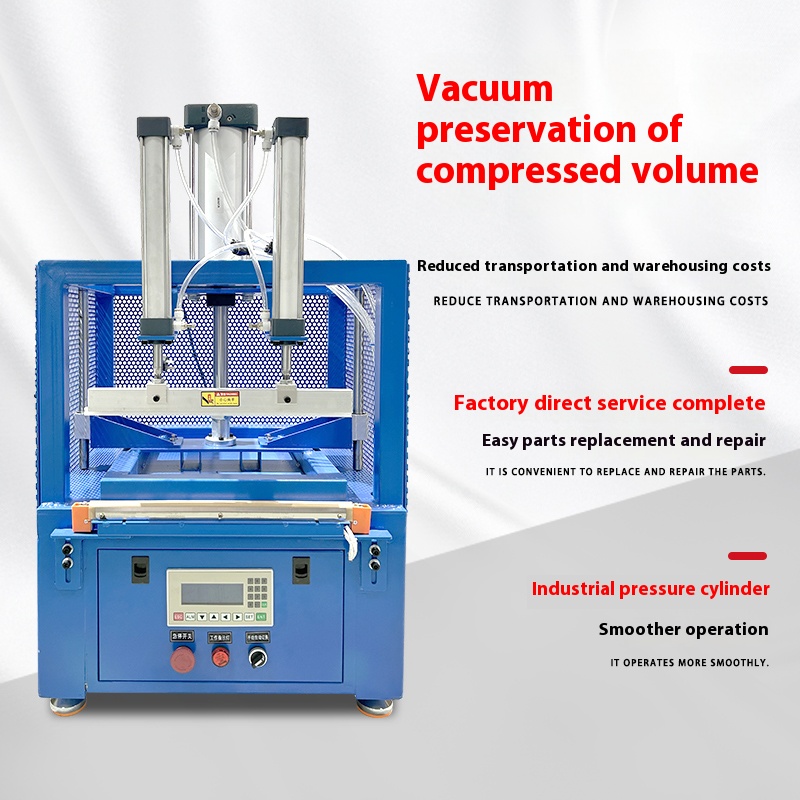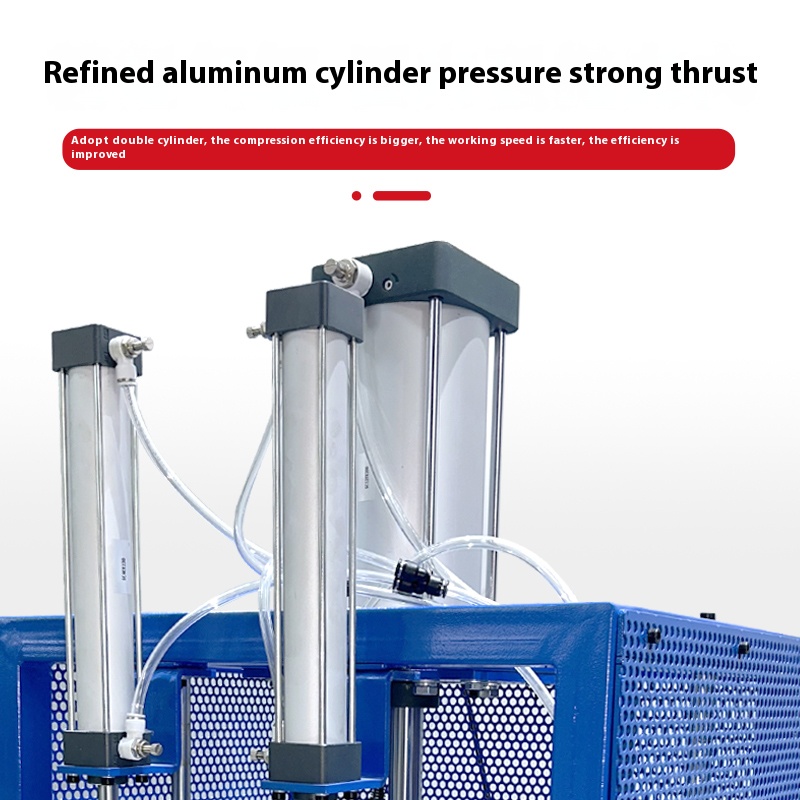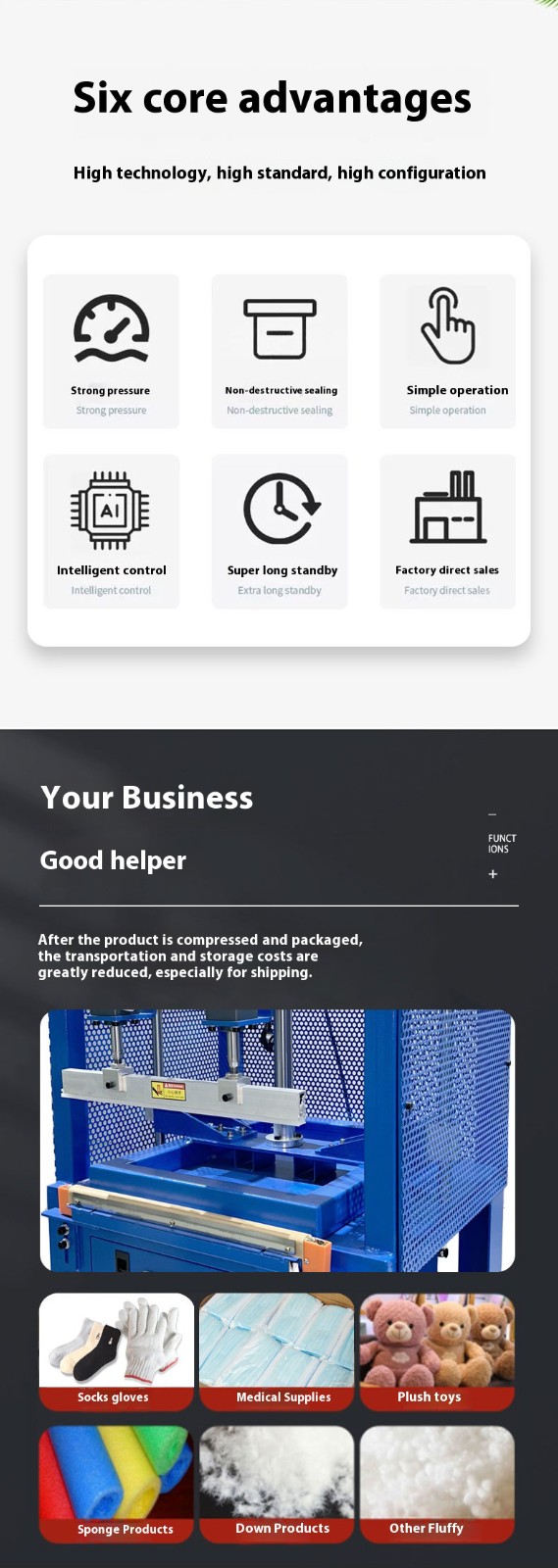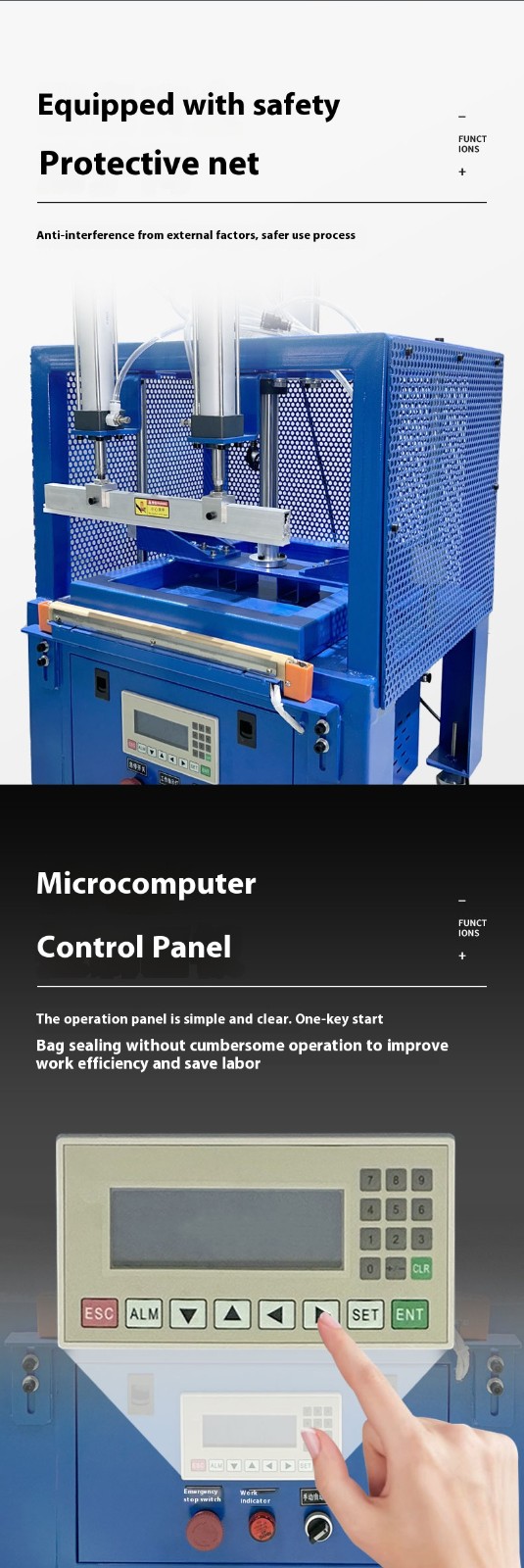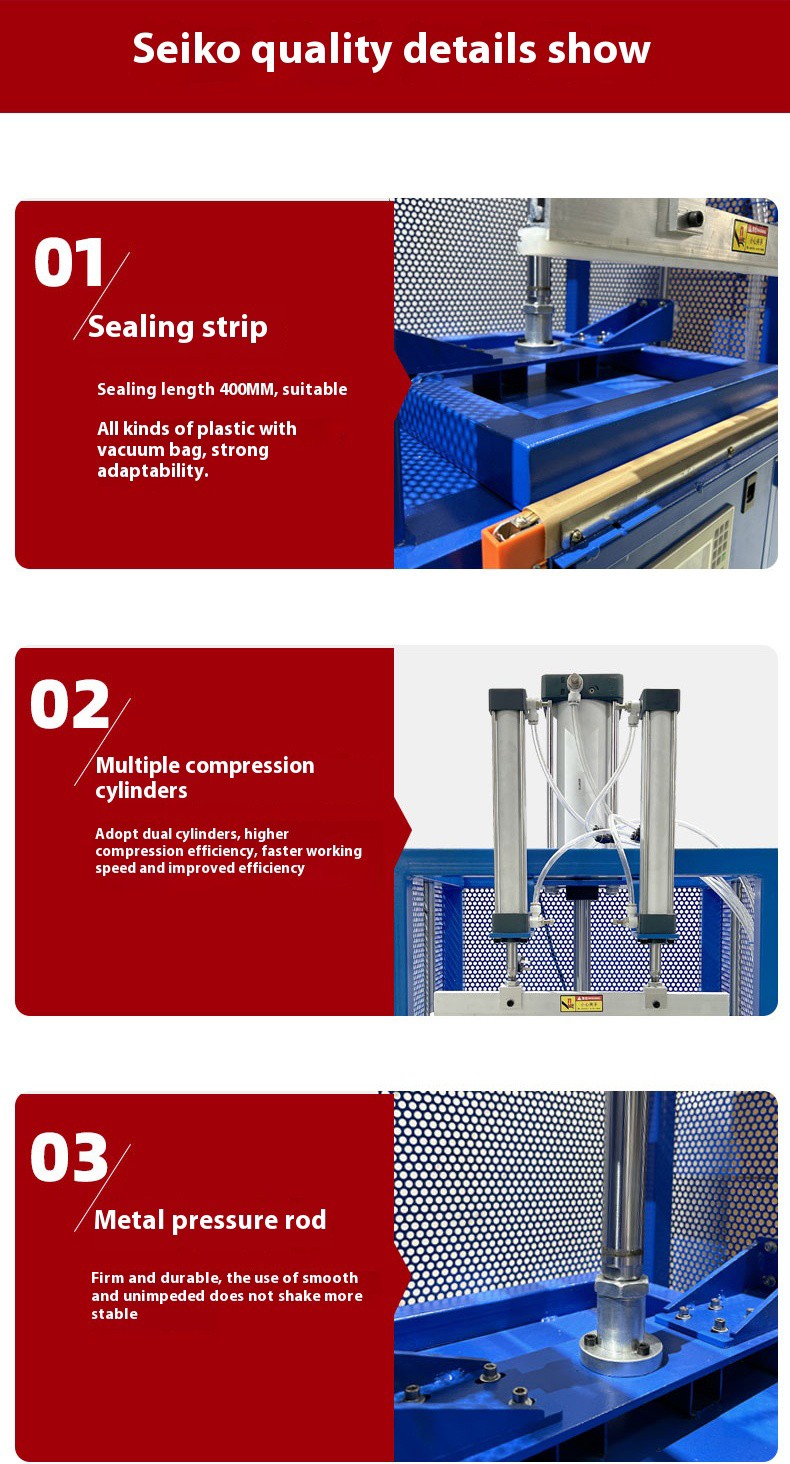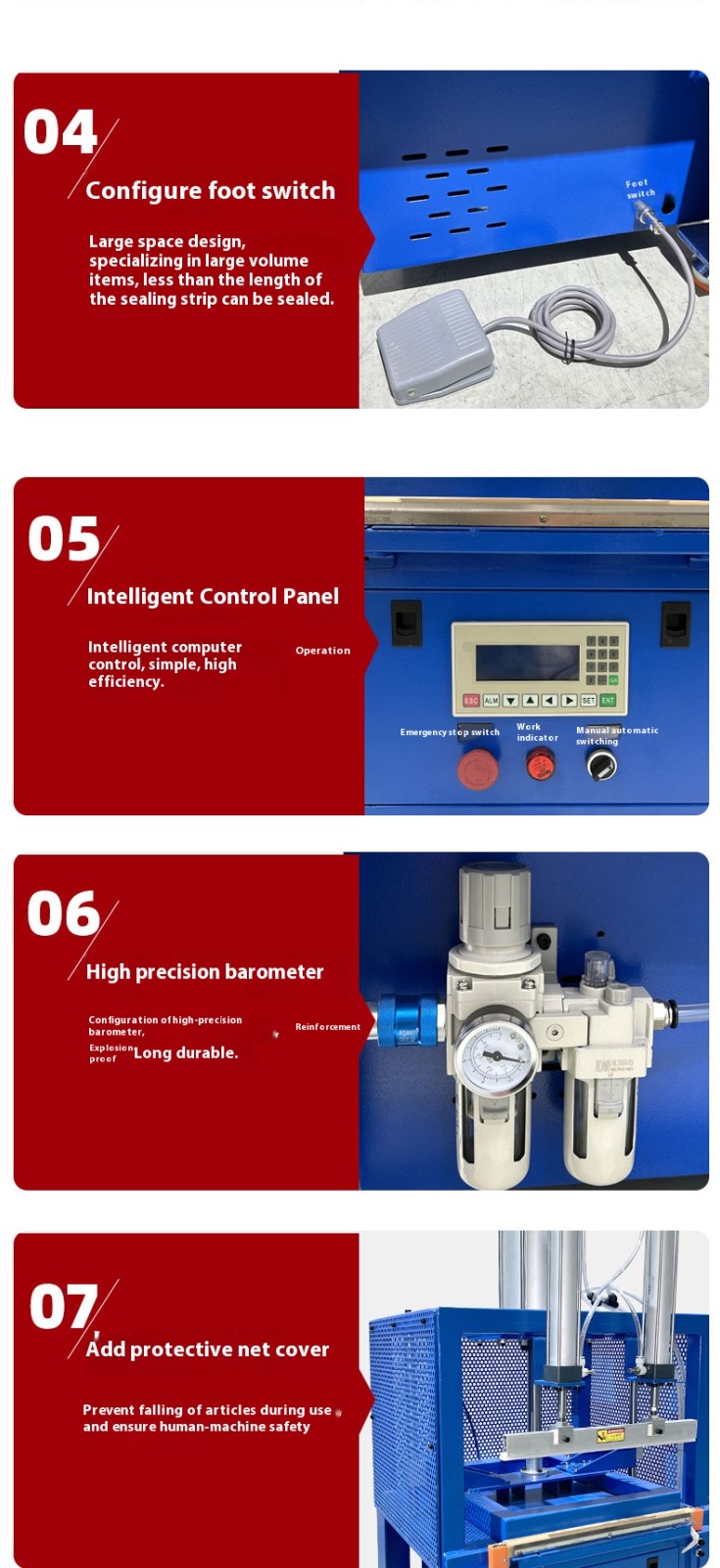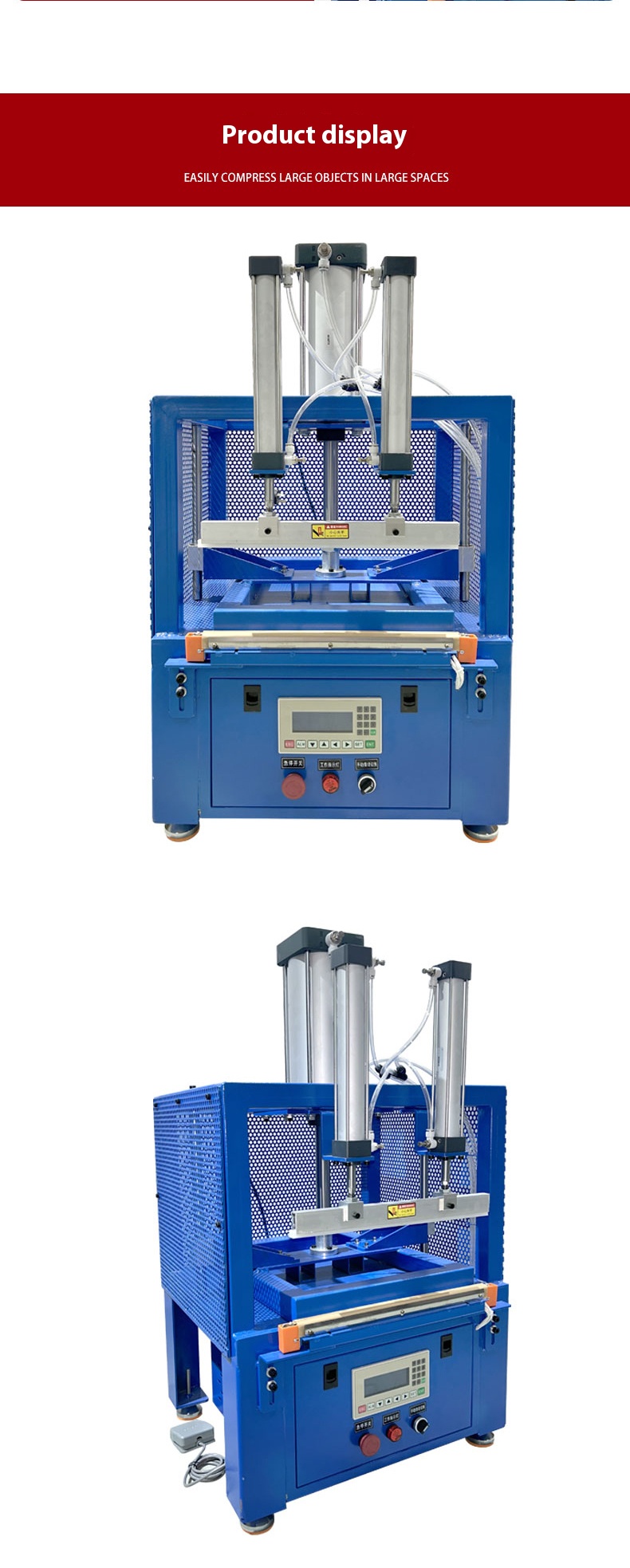The heat sealing temperature of the compression sealing packaging machine has numerous impacts on the sealing quality, which are as follows:
When the Temperature is Too Low
- Insufficient Sealing Strength: When the heat sealing temperature is too low, the molecular chains of the packaging material do not move sufficiently and cannot form a good fusion. This leads to a weak bonding force at the sealing area. During subsequent handling and storage, the sealing is likely to crack, causing the packaging to lose its airtightness and fail to protect the internal items.
- Uneven Sealing Appearance: Due to insufficient heat, the materials at the sealing area cannot be evenly melted and bonded. Problems such as wrinkles, air bubbles, or uneven sealing edges will occur, affecting the aesthetic appearance and overall quality of the packaging.
When the Temperature is Too High
- Material Deformation and Damage: Excessively high temperatures can cause the packaging material to be over-melted or even charred. For some heat-sensitive materials, it may lead to changes in their properties, such as becoming brittle and losing elasticity, thus reducing the protective performance of the packaging. At the same time, material deformation may also affect the dimensional accuracy of the packaging, making it not meet the requirements.
- Overflow of Material at the Sealing Area: When the temperature is too high, the packaging material will be over-melted. Under the action of the sealing pressure, the excess material will be squeezed out from the sealing edge, forming an overflow of material. The overflow of material not only affects the appearance of the packaging but may also contaminate the product or the packaging equipment. Moreover, it will make the thickness of the sealing area uneven, affecting the strength and airtightness of the sealing.
- Aging of the Heat Sealing Layer: Under high-temperature heat sealing conditions for a long time, the heat sealing layer at the sealing area will age more rapidly, reducing its flexibility and weather resistance. This means that during long-term storage or use, the sealing area is more likely to crack and break, affecting the long-term stability of the packaging.
When the Temperature is Appropriate
- High Sealing Strength: An appropriate heat sealing temperature enables the molecular chains of the packaging material to move fully and penetrate and entangle with each other, forming a firm bond. Such a seal has a high strength and can withstand a certain amount of tensile and compressive forces, ensuring that the packaging remains sealed throughout the circulation and use process and protecting the internal items from external factors.
- Good Sealing Appearance: At the right temperature, the materials at the sealing area can be evenly melted and cooled, forming a flat and smooth sealing edge without defects such as air bubbles, wrinkles, or overflow of material. This not only makes the packaging look good but also enhances the overall image and market competitiveness of the product.
- Good Maintenance of Material Properties: An appropriate heat sealing temperature will not have an adverse impact on the properties of the packaging material. It can maintain the original physical and chemical properties of the material, such as flexibility, water resistance, and corrosion resistance. This helps to extend the service life of the packaging and ensures that the packaging can effectively protect the product during storage and transportation
